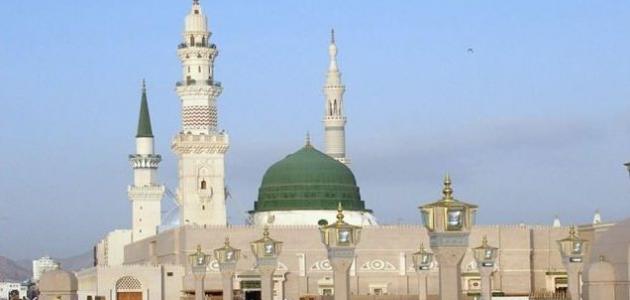Amman city
The city of Amman is the capital of the Hashemite Kingdom of Jordan, and its largest city. It is the Kasbah of the Land of Balqa, as Al-Samani said about it: “Amman is the city of Balqa.” The capital is about 750 meters above sea level, and is composed of several mountains. It is considered one of the oldest cities that are still inhabited. With population to this day, the city flourished in the Roman era, and Yaqut al-Hamawi mentioned it in his book (Mu’jam al-Buldan), where he said: “Amman is the city of Daqyanus (who fascinated the Companions of the Cave), and near it is the Cave, and Al-Raqim is well known to the people of that country, and by God Know".
City location and area
The city of Amman is located in the center of the Hashemite Kingdom of Jordan, specifically at latitude 31 north and longitude 35 east. It is located 360 km north of the city of Aqaba, 80 km south of the city of Irbid, and is approximately 45 km to the east from the Jordan River, and 180 km south of the city. Damascus, located east of the city of Baghdad in Iraq, is about 800 km away, and north of Mecca, about 1225 km away. It is an area where there are many mountains and plateaus, as the city was initially founded in the valleys, between the mountains, and with the passage of time, urbanization extended across the mountain peaks. Note that the capital, Amman, is considered the economic, educational, administrative, and commercial heart of the Hashemite Kingdom of Jordan, and its distinguished location has contributed to attracting tourists and visitors from various parts of Western Europe, Australia, North America, Japan, and many neighboring Arab countries, and it is worth It should be noted that the total area of the city of Amman, excluding the suburbs, is approximately 700 kmXNUMX2Its area, including the suburbs, is about 1680 kmXNUMX2.
Read also:Essay topic about PetraLabel
The Hittites and Hyksos came to the city of Amman in ancient times, then the ancient Amalekites inhabited it, followed by the Ammonite tribes (Ammonites). Where they named the city after themselves; In the beginning, they called it (Rabbah Ammon), which means: the capital, or the king’s abode. With the passage of time, the word Rabbah was dropped and Ammon remained. Then the Ptolemies entered the city under the leadership of Ptolemy II in the year 285 BC, and it was called (Philadelphia). That is, brotherly love; Named after the leader Philadelphus, and after that, the city of Amman was divided into two parts: one part belonged to the Nabataean state, and the other part joined the Sulloside state, where this division continued until the Roman king Herod I came in the year 30 BC to the city, seized it, and then The era of Islamic conquest came, when the Umayyads called it (Amman).
Topography
The city of Amman extends topographically both longitudinally and transversely over about twenty mountains, in addition to a group of regions with different terrains. The most important of these mountains and regions are:
- The seven main mountains: It consists of: Jabal Al-Hussein, Jabal Amman, Jabal Al-Luweibdeh, Jabal Al-Nasr, Jabal Al-Taj, Jabal Al-Jawfa, and Jabal Al-Qalaa.
- The northern area: It is an area consisting of a group of mountains, with undulating terrain, such as the Jubaiha, Abu Nusair, and Shafa Badran areas.
- Areas facing the slopes of mountains: Wadi Abdoun, Wadi Al-Haddada, and Wadi Saqra.
- Western Region: It is the area that extends along the Jordan Valley, and is considered one of the relatively high areas compared to the rest of the city’s areas, as its altitude is about 1000 meters above sea level. It includes the Shmeisani, Sweileh, and Tla’ Al-Ali areas.
- The eastern and southeastern regions: This region is characterized by its undulating surface, and it is considered an extension of the arid desert lands and the Jordanian desert, such as the Qweismeh region and southern Marka.
Population
According to 2007 statistics, the population is approximately 2.2 million people, and they are of Jordanian origin (the original population), in addition to citizens who immigrated from the State of Palestine after what is known as the Nakba in 1948 AD, and the setback in 1967 AD, and a large number of Jordanian citizens immigrated to it internally. From various cities and regions of the Kingdom, in addition to thousands of citizens residing from neighboring Arab countries, such as Iraq, the Gulf states, and residents of European countries; For the purpose of work or study, according to statistics and population studies, the population of the city of Amman is likely to reach about 6.4 million people by the year 2025 AD.
Read also:An expression of love for the homeland and our duty towards itThe historical and urban development of the city of Amman
The city of Amman has witnessed historical and urban development throughout its history, and the following is a mention of the most important stages of this development:
- Amman in ancient times: Fossils and studies conducted on the city of Amman revealed the existence of very ancient civilizations that arose there. Where ancient man began to settle the region, specifically in the Jabal al-Qalaa area and the outskirts of Wadi al-Sail, scientists have inferred this through the presence of many archaeological evidence in those areas, such as the presence of caves on the slopes, and the presence of running water in the torrent. The Ammonite tribes also settled in the region. During the Bronze Age, they built primitive houses in Jabal al-Qalaa and the outskirts of Wadi al-Sail, knowing that the Ammonites’ rule of the region continued until the Assyrians came and took control of it, and then the city was subjected to the rule of the Persians, then the Macedonians, then the Ptolemies, and then Ptolemy Philadelphus seized it. It was then ruled by the Greek Seleucids, then the Nabataeans, and then the Romans, who replanned the city. Urban development continued during the Byzantine era, and the city became one of the largest Christian cities in Transjordan.
- Amman in Islamic times: The city of Amman enjoyed great importance during the Islamic era. Where the Quraishites resided during their summer trade trips to the Levant, knowing that the leader Yazid bin Abi Sufyan entered it and conquered it in the year 16 AH. The region flourished during the Umayyad era, and what indicates this is the presence of the Umayyad houses surrounded by rooms in the mountain of the castle. In the Abbasid era, the capital of government moved to Iraq, which led to its weakness, but it retained its importance and position among the cities. Despite this, the city was exposed to more calamities that led to its significant weakness. Due to the invasion of the Tatars and the occurrence of earthquakes, and at the beginning of the fourteenth century AD, Amman became the seat of the rule of Prince Sarghatmish during the Mamluk era, where he established schools and mosques, and Ottoman rule followed. In the nineteenth century, the importance of the city declined, and it became devoid of population until That it was inhabited by Circassian immigrants; With the aim of protecting the Hejaz Railway, this group remained the majority until the Jordanian Emirate was established in 1921 AD.
- Amman in the Hashemite era: The Emirate of Transjordan was established in 1921 AD under the leadership of Prince Abdullah bin Hussein bin Ali, where he made the city of Amman its capital. During the period between (1921-1946), the population and urban expansion increased significantly. In 1930 AD, the population reached about 10 thousand people, and various state service institutions, shops, and homes were established. Population growth continued to rise until it reached about 60 thousand people in the 1946s. In 1958 AD, the emirate turned into a kingdom, and the capital, Amman, began With expansion in urbanization and population growth; In 150 AD, the population reached about XNUMX thousand people, and the city continued to grow and develop, appearing to us as it is today, a large, modern city.









